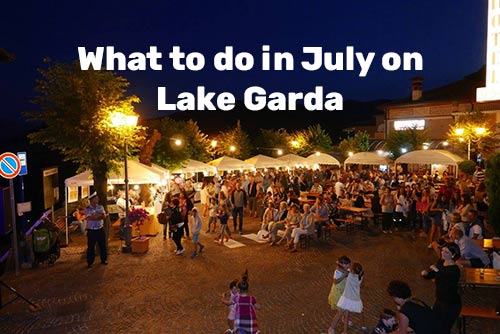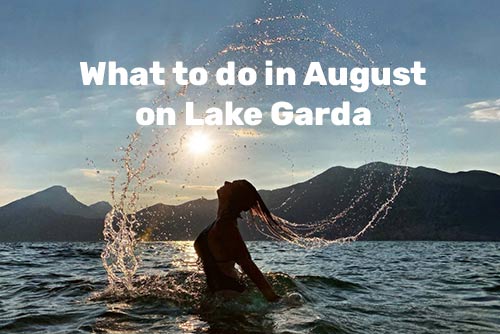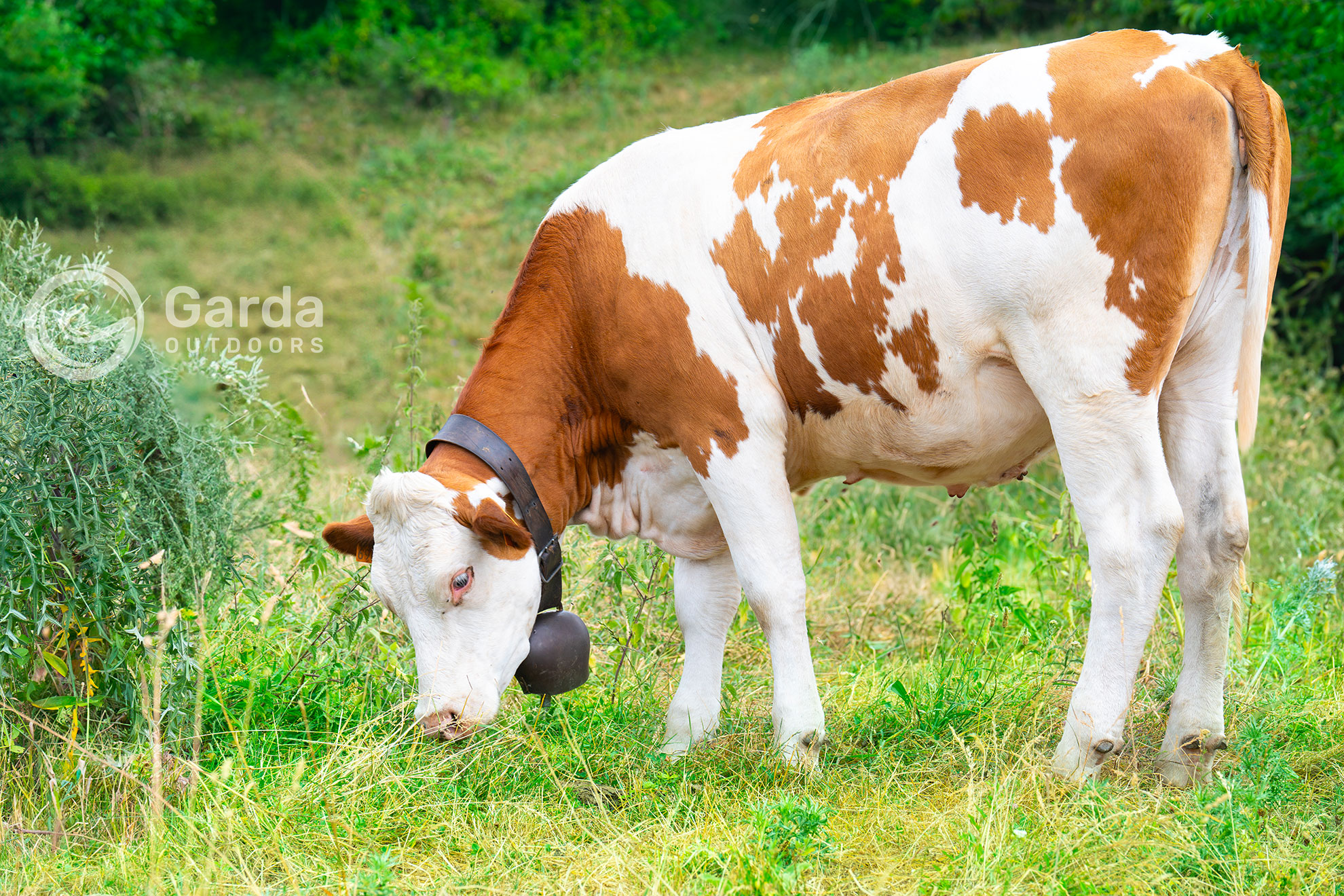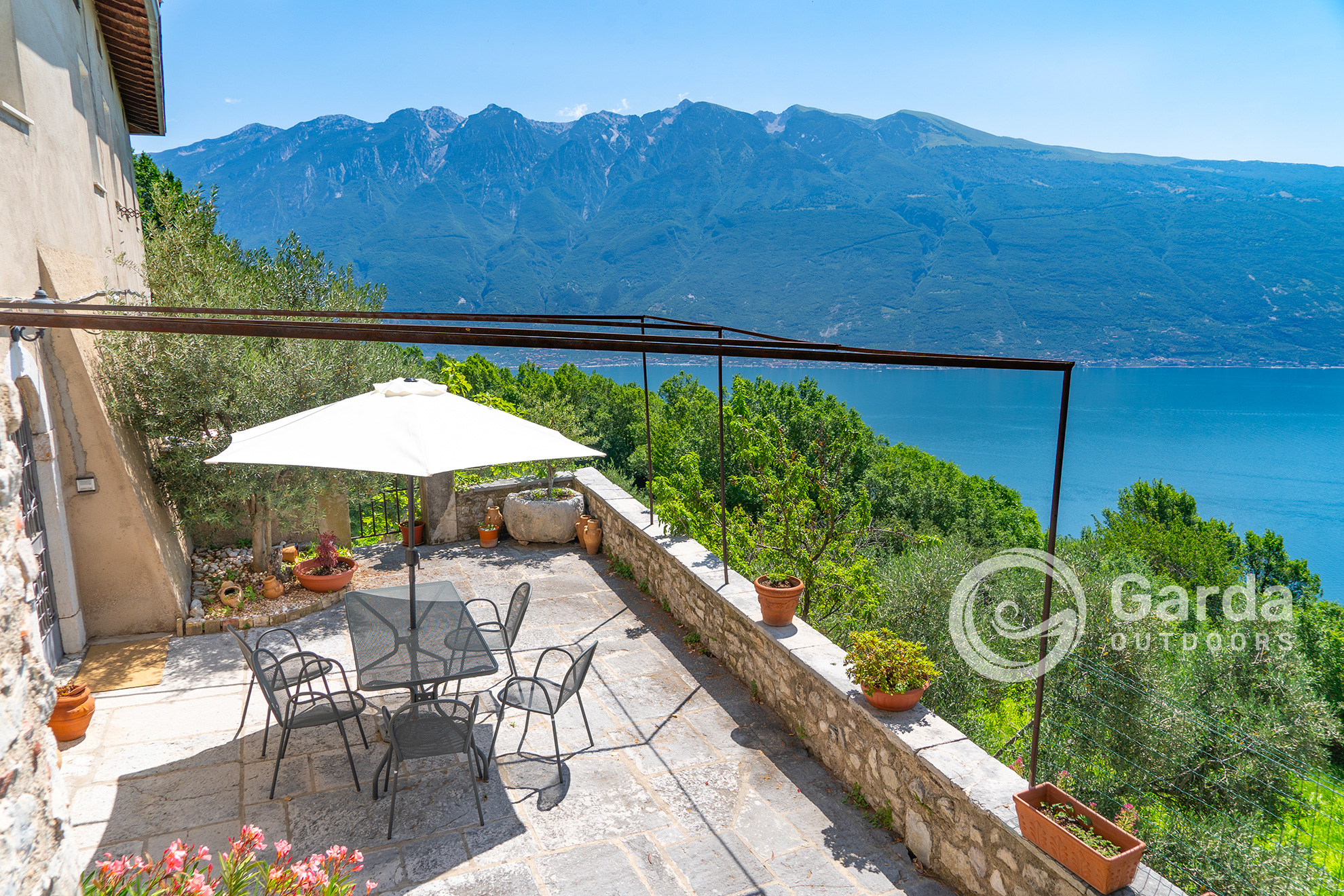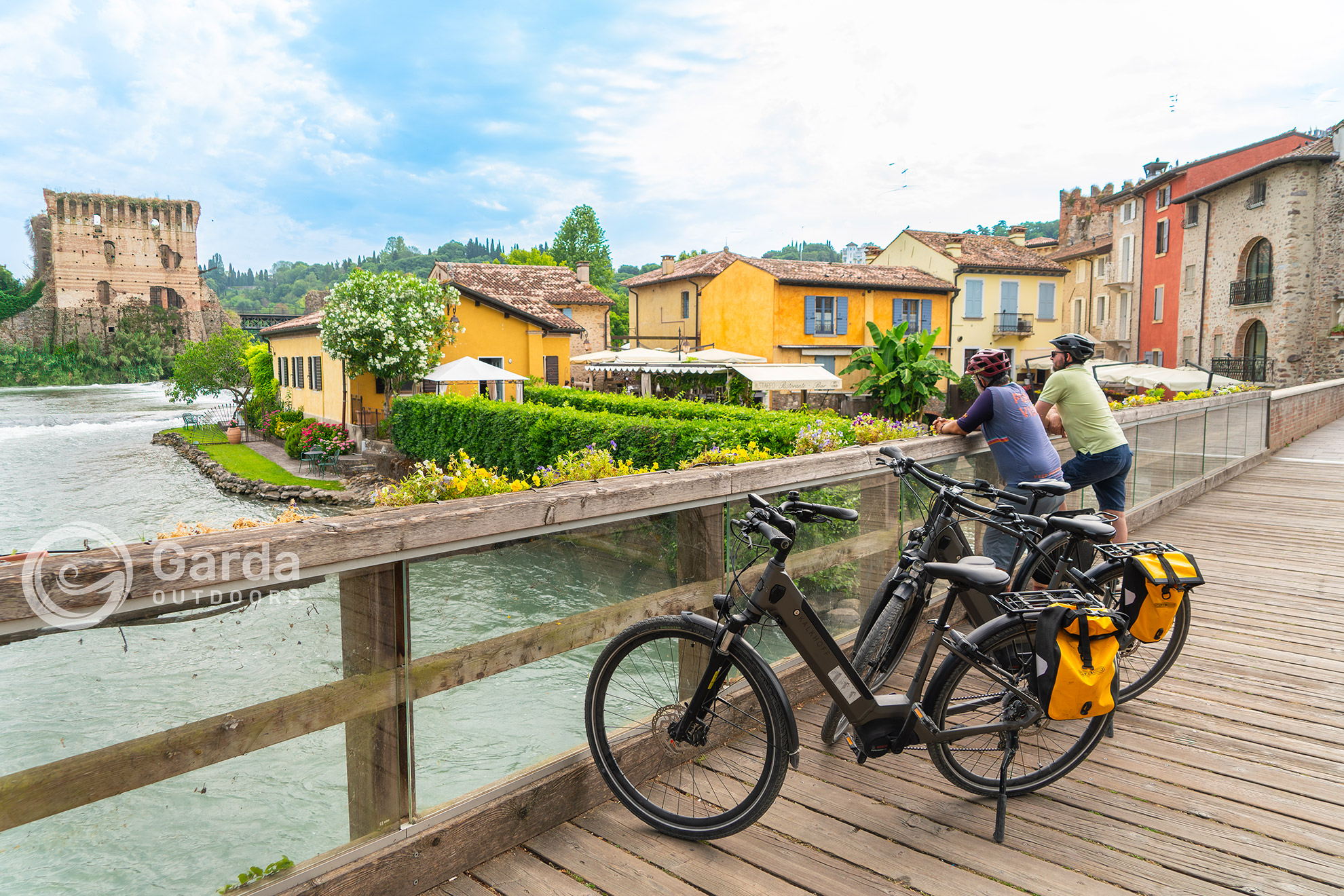The Valtènesi lies in the south-western area of Lake Garda, in the province of Brescia. It is made up of coastal municipalities overlooking the lake and municipalities in the hinterland lying on the morainic hills, which more precisely are 7: Padenghe sul Garda, Moniga del Garda, Manerba del Garda, San Felice del Benaco, Puegnago del Garda, Polpenazze del Garda and Soiano del Lago.
Scattered with ancient villages, medieval castles that dominate between green and blue, splendid villas, and towers that have marked history, Valtenesi is also an important production area of DOC wine and DOP extra virgin olive oil. In particular, here is produced a rosé wine called “Chiaretto” based on Groppello, a native grape of the area.
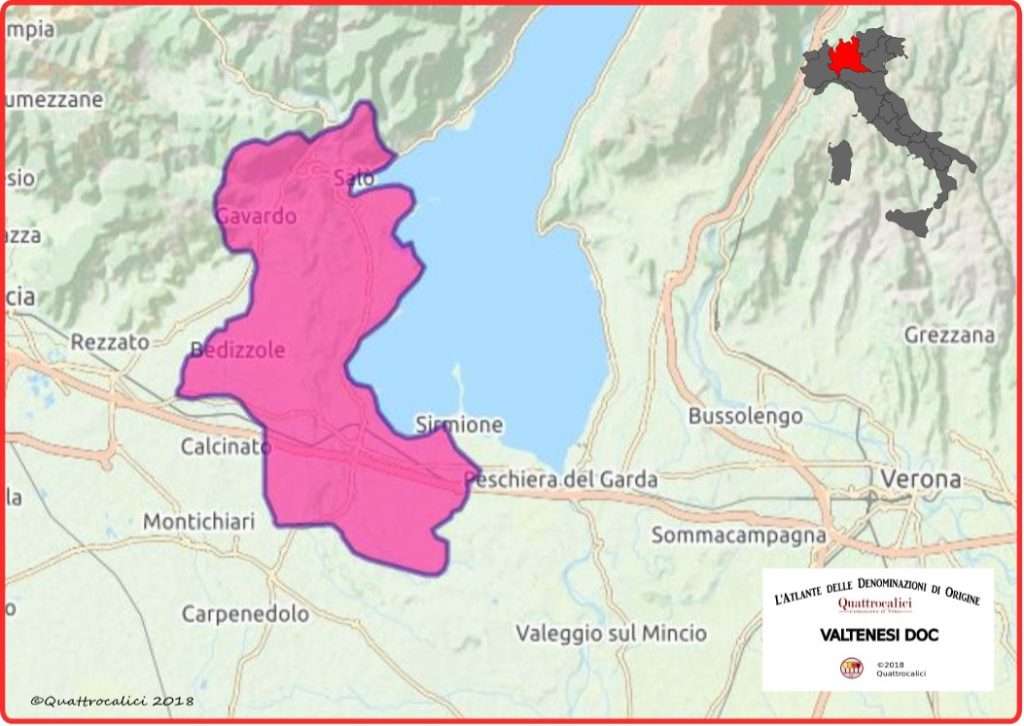

The etymology of the name Valtenesi, for some historians, derives from Vallis Atheniensis, attributable to the settlement of Athenian colonists, exiles following the Roman armies. Others trace its origin back to the ancient Pieve, called Tenense in a diploma of Frederick II of the year 1221, from which the whole surrounding area took its name.
We just have to give an excursus to this splendid territory.
What to see in a day trip in Valtenesi
The villages of Valtenesi.
Padenghe sul Garda.
The main attraction of the town is undoubtedly the Castle, an ancient stronghold dating back to the twelfth century, from which you can enjoy a beautiful view of the lake.
The structure, with a 20 m high square defense tower, stands on a hill overlooking the town. Inside the walls, which can be accessed via an arched portal with a drawbridge, there are some houses divided by two streets.
The castle, attested as existing in 1145, was probably built on the ruins of a previous building (10th century). The building was recognized in 1154 among the assets granted by the emperor Frederick Barbarossa to the bishop of Verona Teobaldo. The castle has always been the subject of disputes between Brescia and Verona until 1328, when it came into the possession of the Scaligeri. In the 15th and 16th centuries it was disputed by the Republic of Venice and the Duchy of Milan. The castle remained in the possession of the Venetians from 1520 to 1796. In the following years the moat was buried to defend the manor. In the sixties the complex underwent an important restoration with consolidation of the perimeter walls.
Not far from the castle stands the parish church of Sant’Emiliano, dating back to the twelfth century.
Among the other significant monuments we find the church of the Madonna della Neve and of S. Giovanni Battista in the hamlet of Villa, the church of the Visitation of the Blessed Virgin Mary and of S. Eurosia of 1720 in the hamlet of Pratello, the sanctuary of the Beata Vergine della Torricella on the right. of the cemetery of 1692, the parish church of 1600 and Palazzo Barbieri, seat of the town hall, dating back to the eighteenth century.
In the immediate vicinity, moreover, Castel Drugolo is worthy of note, restored in 1934, now owned by Baron Lanni della Quara. Built at the end of the fourteenth century, with a square plan on the high wall of the shoe, with a drawbridge and battlements.
We also mark the events page of the Municipality of Padenghe sul Garda: click here.
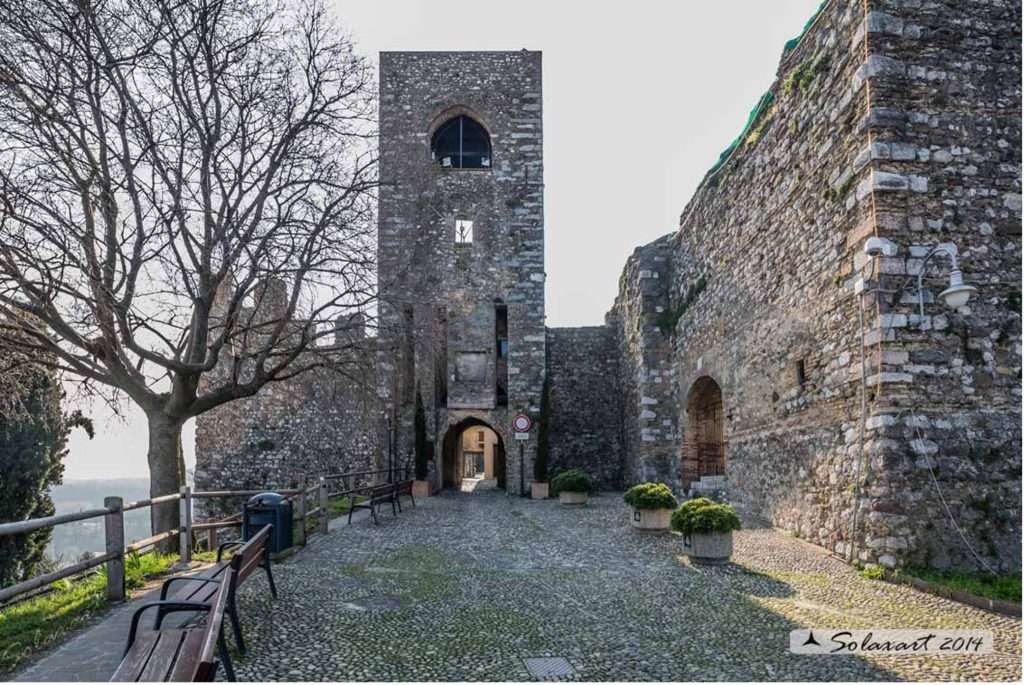
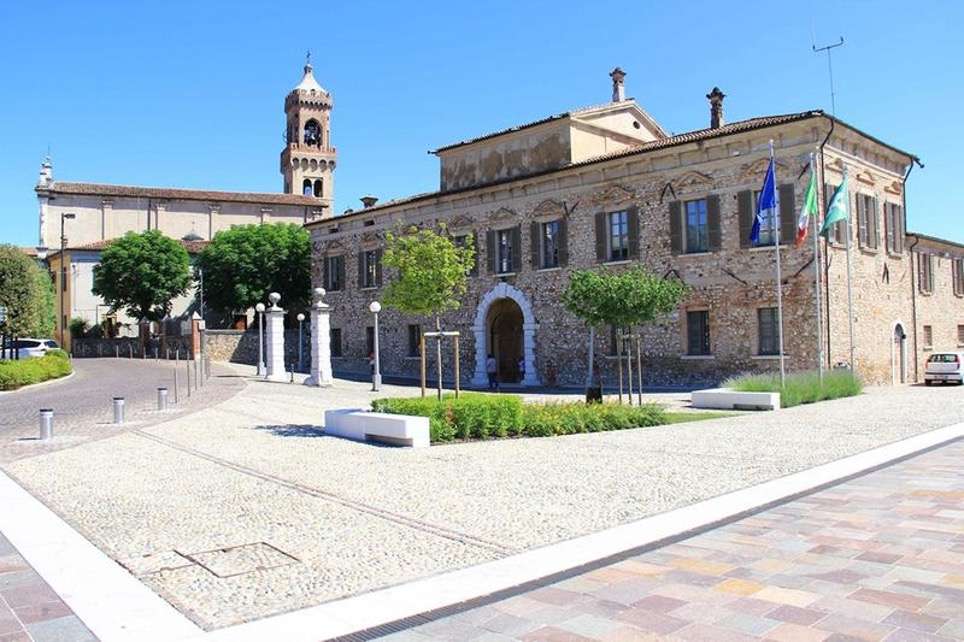
Moniga del Garda.
Moniga is another beautiful village on the lake, in the heart of the hills between Desenzano and Salò.
Inhabited since the ancient Bronze Age, it has the typical medieval structure with countless streets and alleys, and its Castle (dating back to the 10th century), is one of the best preserved, both for what concerns the plant and for the structures masonry.
Since there has never been the presence of a noble palace and never a local gentleman has lived there, it is correct to define it as a castle-shelter (from the Latin receptum = refuge): a simple aggregation of houses where the population of the surrounding village took refuge. in case of danger, taking with him what is necessary for his sustenance.
It is therefore a municipal defensive construction, very similar to that of Padenghe and the others present in Valtenesi.
Not only that: it is precisely among the various castles in the area that, in the period of the barbarian invasions, an ingenious connection system was developed thanks to which, through the use of precise signals, it was possible to warn of the danger from here to the city of Brescia.
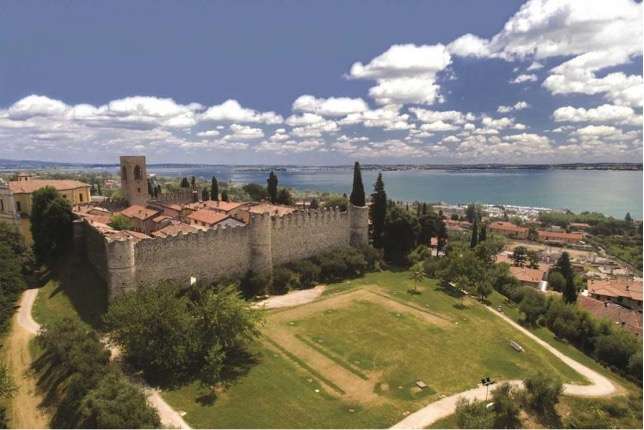
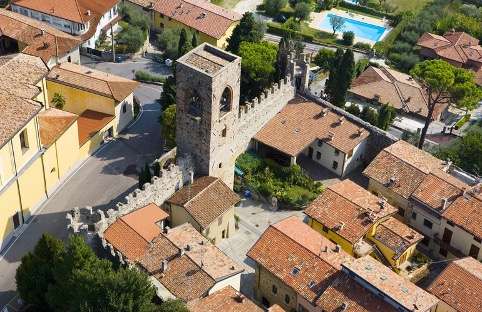
Manerba del Garda.
One of the most evocative protected areas of the entire Lake Garda is located in Manerba del Garda: the Rocca, del Sasso Nature Reserve and the Lake Park (1,160,000 square meters of land and 850,000 square meters of lake). Established to protect and enhance the natural and landscape characteristics of the area with the ancient and archaeological ones, as an important heritage of history and biodiversity.
The main points of reference are the ancient medieval fortress with its Civic Archaeological Museum of Valtenesi, which is a memory and testimony of the reasons for which man has decided to settle in this wonderful context since ancient times (some finds date back to Mesolithic – 8000-5000 BC).
La Rocca, that is the foundations and the remains of an ancient medieval castle, is located on a spur of rock over 150 meters high overlooking the lake, which make it an unmistakable reference of the coastal profile of Lake Garda, easily recognizable from any point. panoramic. For more info, please refer to the in-depth article: click here.
We also point out the numerous beaches that for almost 12 kilometers offer a variety of perspectives of the lake and the mountains, and the beautiful island of San Biagio.

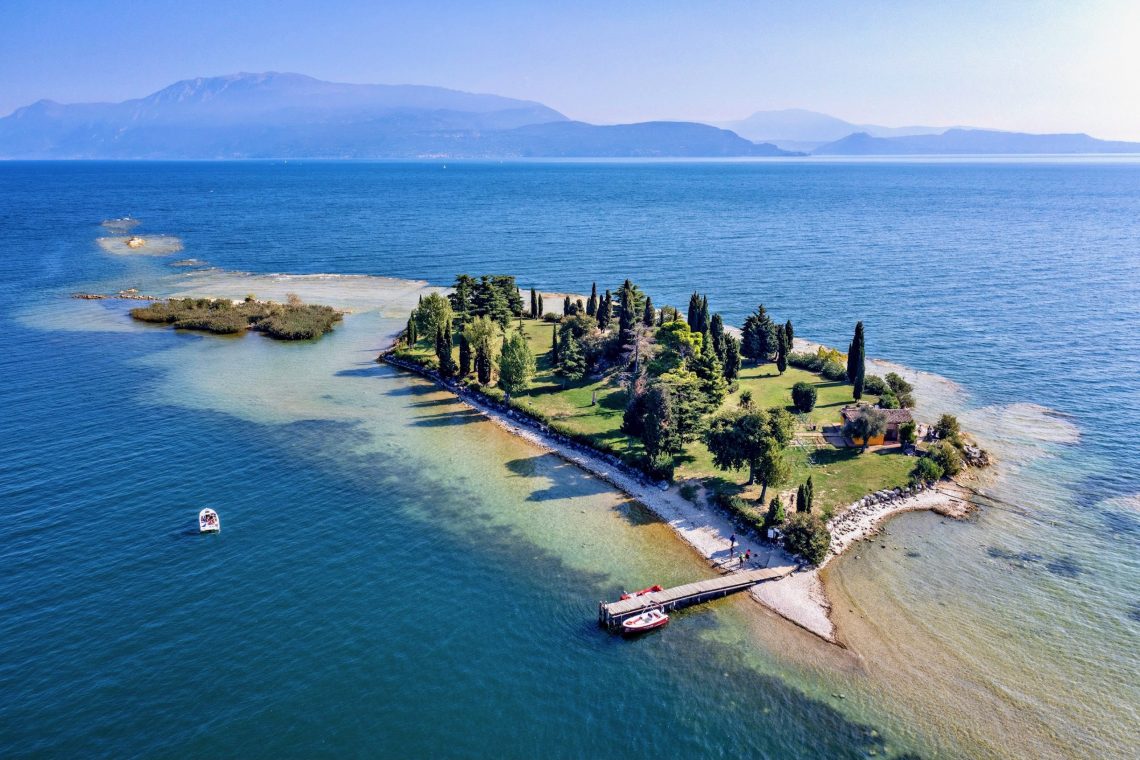
San Felice del Benaco.
The San Felice del Benaco district is located between the gulfs of Salò and Manerba and also includes the small town of Portese, together with the splendid Isola del Garda.
In addition to the beautiful walks among olive groves and the quiet cobbled beaches, in its historic center we can admire the medieval castle, the Palazzo Rotingo, current seat of the Municipality, and the Parish Church, the work of the famous Brescia architect Antonio Corbellini , in whose interior stands an altarpiece of the Romanino.
In the surroundings, the remains of the Castle in the hamlet of Portese and the intimate Sanctuary of the Madonna del Carmine, dating back to the 15th century, are worth a visit.
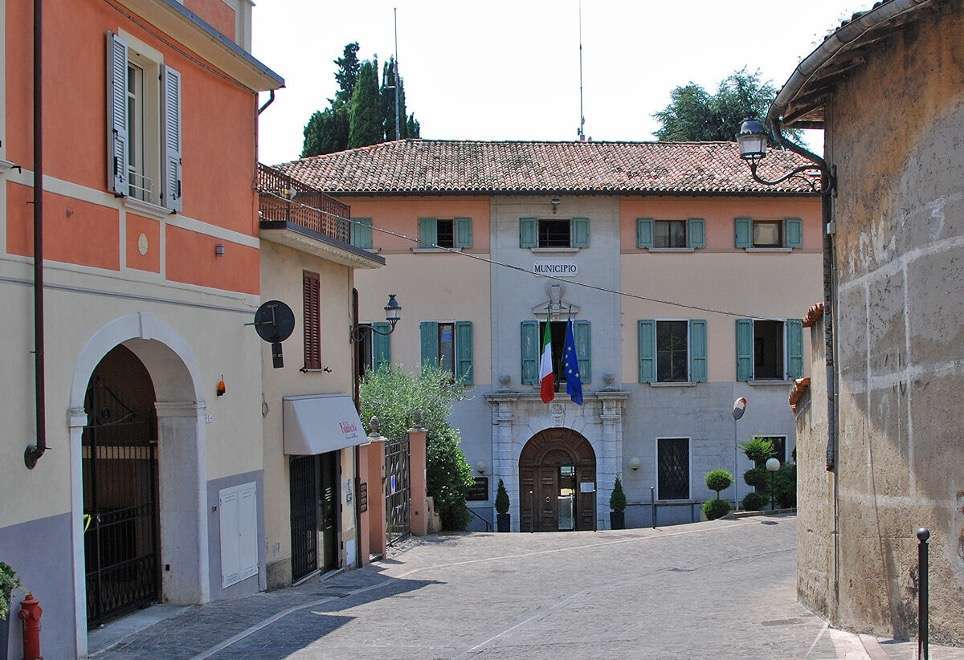
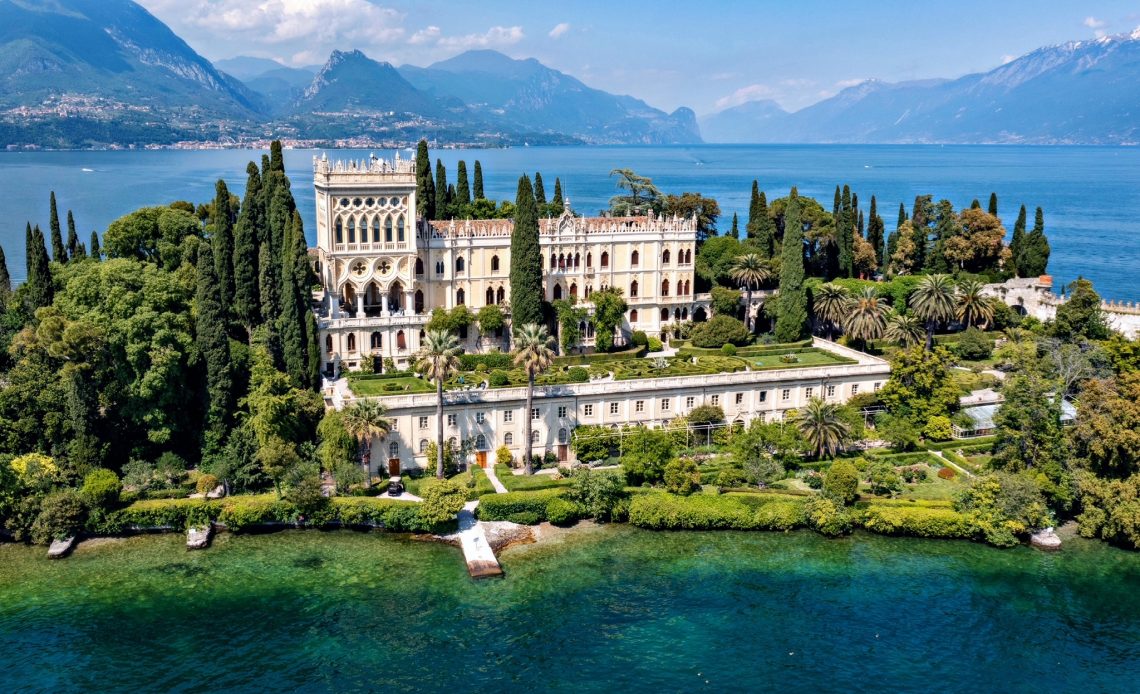
Puegnago del Garda.
The village of Puegnago del Garda rises among the hills offering a splendid view of the lake and Monte Baldo. The Municipality is made up of 6 hamlets: Castello where the Town Hall is located, Mura, Palude, Monteacuto, Raffa and S. Quirico.
In Castello, the remains of the Castle with the nineteenth-century Bell Tower and the city walls are worth seeing.
Furthermore, in the smaller hamlets, we mention small pearls such as: the Church of San Giuseppe in the hamlet of Mura (dating back to the fourteenth century), the Church of San Giovanni Battista in the locality of Palude (dating back to the fifteenth century), the Madonna della Neve Church in the hamlet di Raffa (from 1824 – where you can admire a painting by Andrea Celesti) and the Colombera Tower in Monteacuto, an ancient village originally composed of three farmhouses dating back to between the 17th and 18th centuries.
Finally, for lovers of walking and cycling, we recommend a walk with postcard landscapes that leads to the Sovenigo Lakes: 3 pools of water of intramorenic origin that in July and August are covered with beautiful water lilies and lotus flowers.
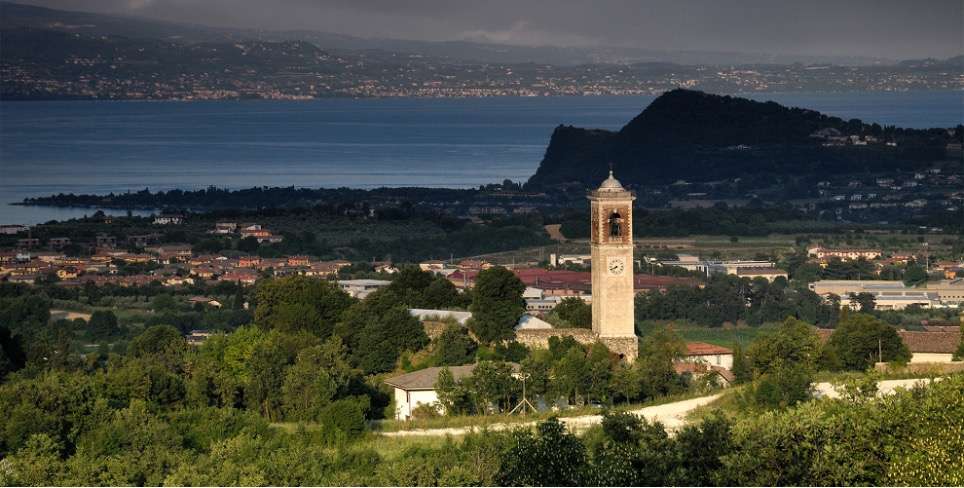
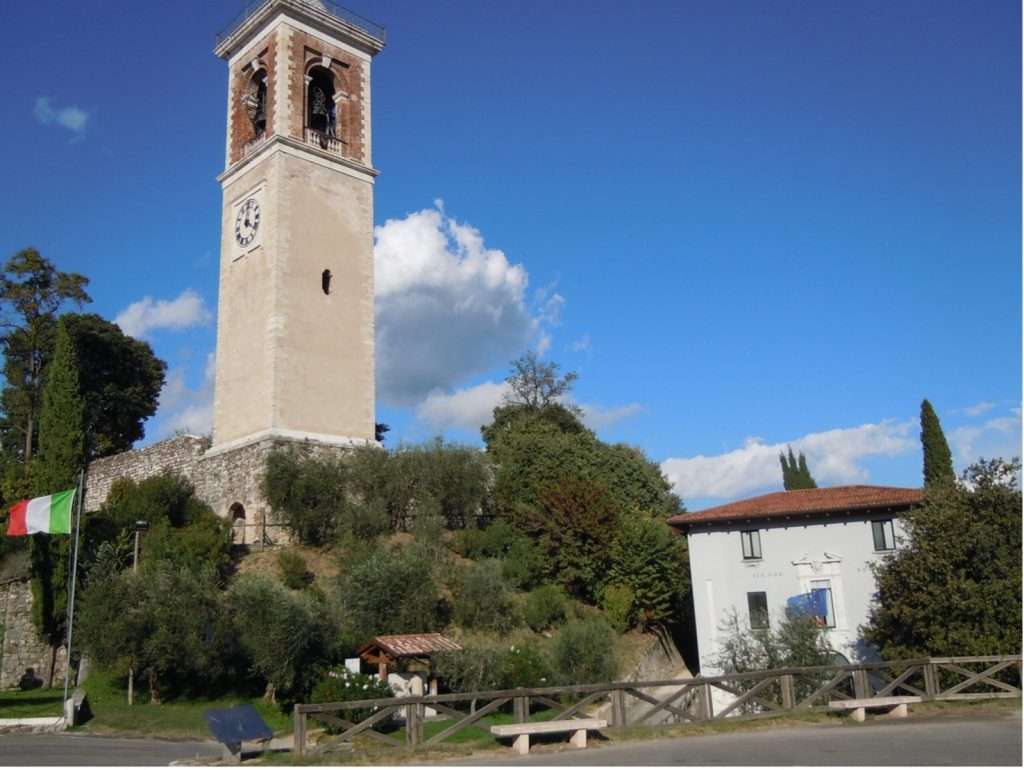
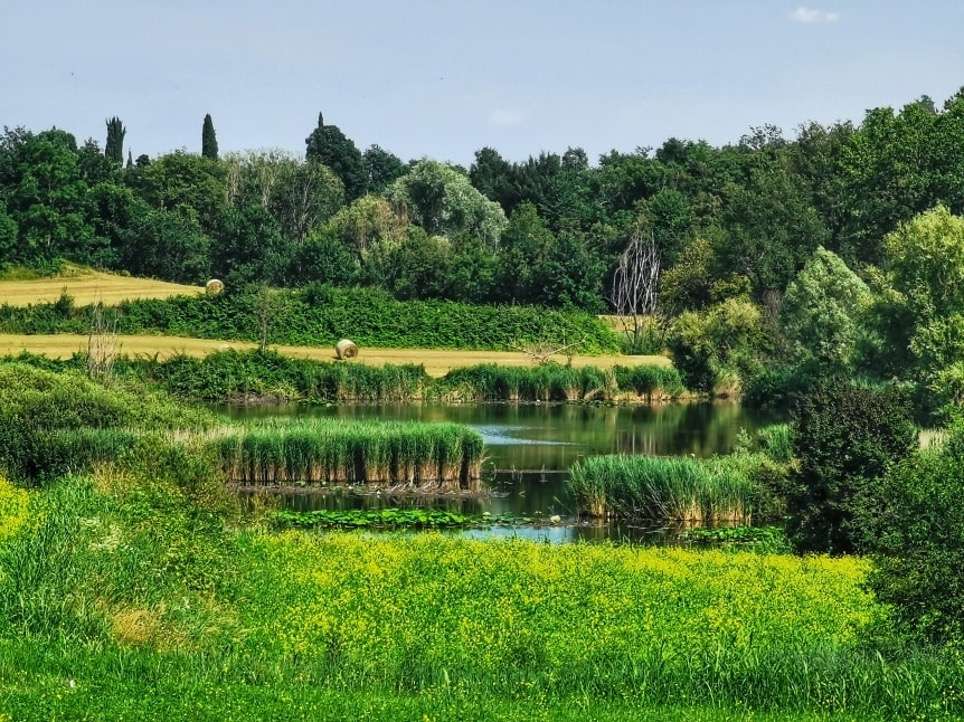
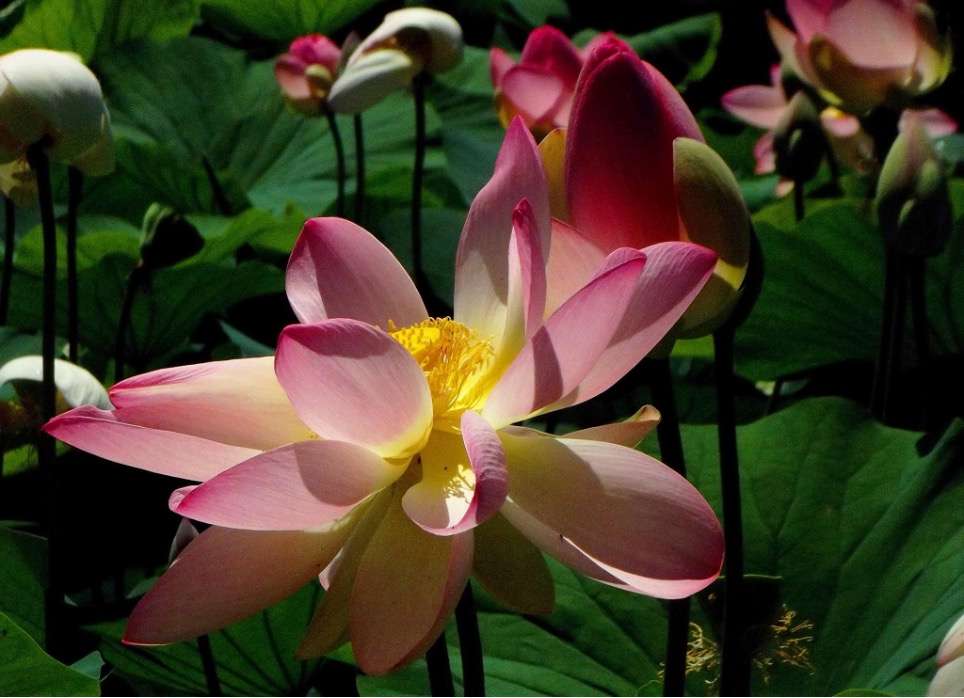
Polpenazze del Garda.
The walls of the ancient castle surround the main residential area of the town of Polpenazze. The castle was built for defensive purposes, as a refuge from the Hungarian invasions of the 10th century, during the early medieval period, and as often happened it was marked by numerous alterations; in fact it was destroyed several times and subsequently rebuilt. The masonry of the ancient complex, characterized by a rather irregular plan, was built through the use of pebbles of various sizes interspersed with local stones, all of which was then arranged according to a precise orientation in order to obtain a regular masonry mesh. Currently, however, only a section of the wall to the west is visible, interrupted by a small tower. It is then still possible to guess what the ancient entrance must have been, moved more to the left than the present one and most likely defended by a tower of which traces remain that also suggest the presence of a drawbridge given the slits present on it. At present, the castle houses the library, the offices of the Municipality and the Parish Church of Santa Maria (built in the second half of the 16th century – with a beautiful Baroque style facade).
In addition, you can visit the Church of San Pietro in Lucone, located in front of the cemetery, which houses a fresco of the Blessed Virgin of 1603 attributed to Pietro Ricchi known as the Lucchese and a very particular organ which, due to the strong counterweights that characterize it, for playing it takes two people; and the Church of San Antonio, located in the hamlet of Picedo, in late Romanesque style.
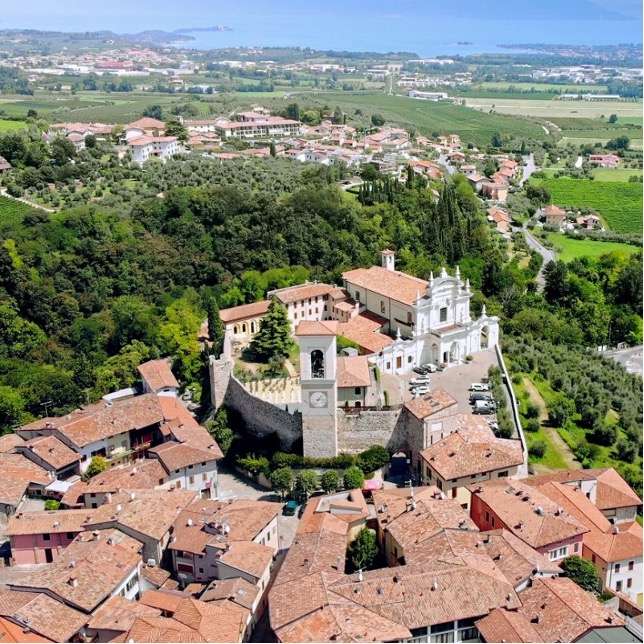
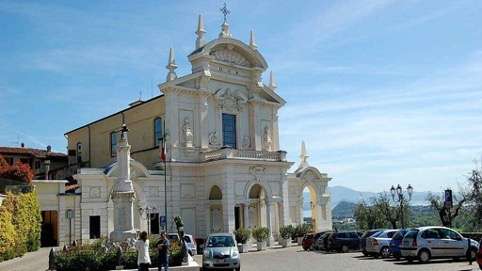
Soiano del Lago.
One of the probable origins of the name of Soiano derives from Solis ianua which means “Gate of the sun”. This beautiful image perfectly describes the atmosphere of the place, full of vineyards and olive trees immersed in the green hills.
Here the Castle dating back to the 10th century is definitely worth a visit, seat of events and events during the summer. Erected 198 meters high, it was built on Roman ruins, from whose tower the view is lost in the panorama of the lake.
Also worth seeing: the Church of San Michele, built between the 16th and 17th centuries, where you can admire paintings by Celesti and Bertanza as well as a magnificent Baroque organ, the work of Antonio Franchino Montechiaro, rich in gilded wood carvings with cascades of fruit and flowers; and in the hamlet of Chizzoline the Church of San Carlo, built in 1610 in honor of San Carlo Borromeo who would have stayed in these places.
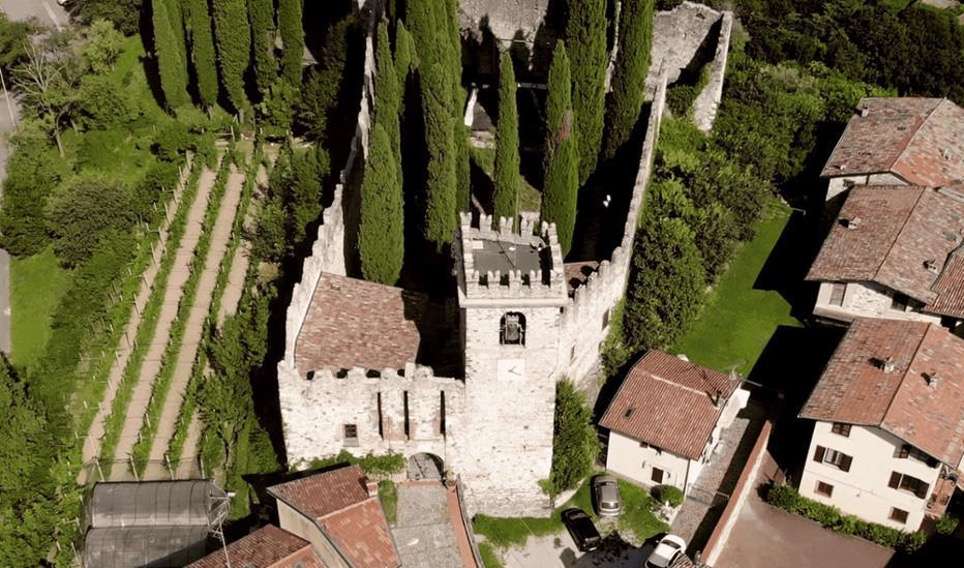
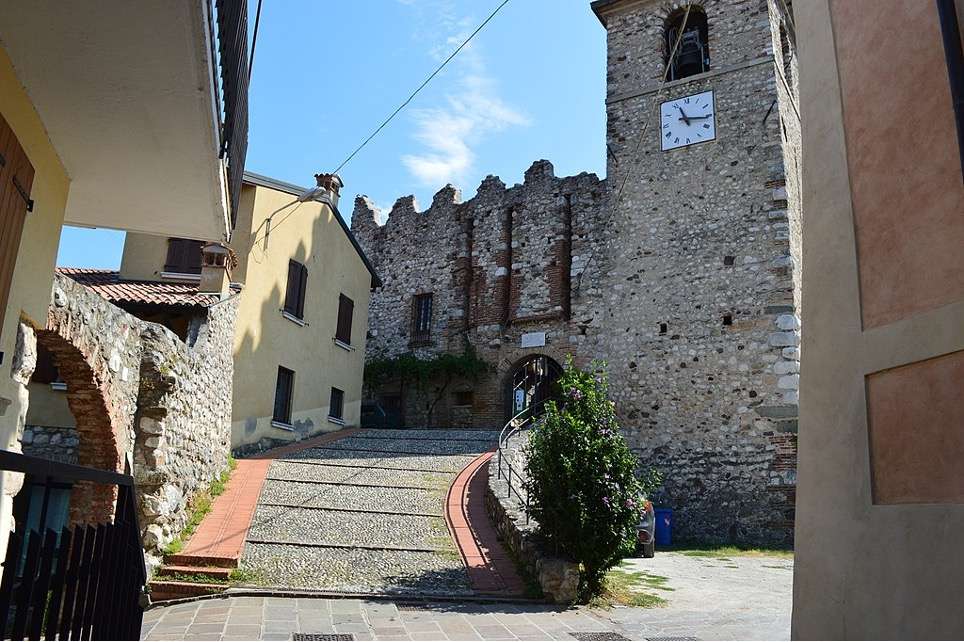
Wines of Valtènesi.
The winemakers of the territory in 1998 joined together to create the Valtènesi Consortium to protect the excellent DOC wines of the territory: Valtènesi Chiaretto, Valtènesi, Benaco Bresciano Riesling, San Martino della Battaglia, Rivera del Garda Classico Chiaretto, Rivera del Garda Classico Groppello, Rivera del Garda Classico Rosso, Rivera del Garda Classico Rosso Superiore.
The most typical vine of Valtènesi is Groppello, which owes its name to the compact shape of its cluster, similar to a “groppo”, in dialect “knot”. It is a native vine, and its most common type is that of the gentle groppello, easy to recognize by the shape of the apex and the always winged cluster, which is medium in size, cylindrical in shape. Its grape has a very thin, blue-violet skin.
Are you curious to know the cellars and labels of these excellent wines? Find the complete list by clicking here.
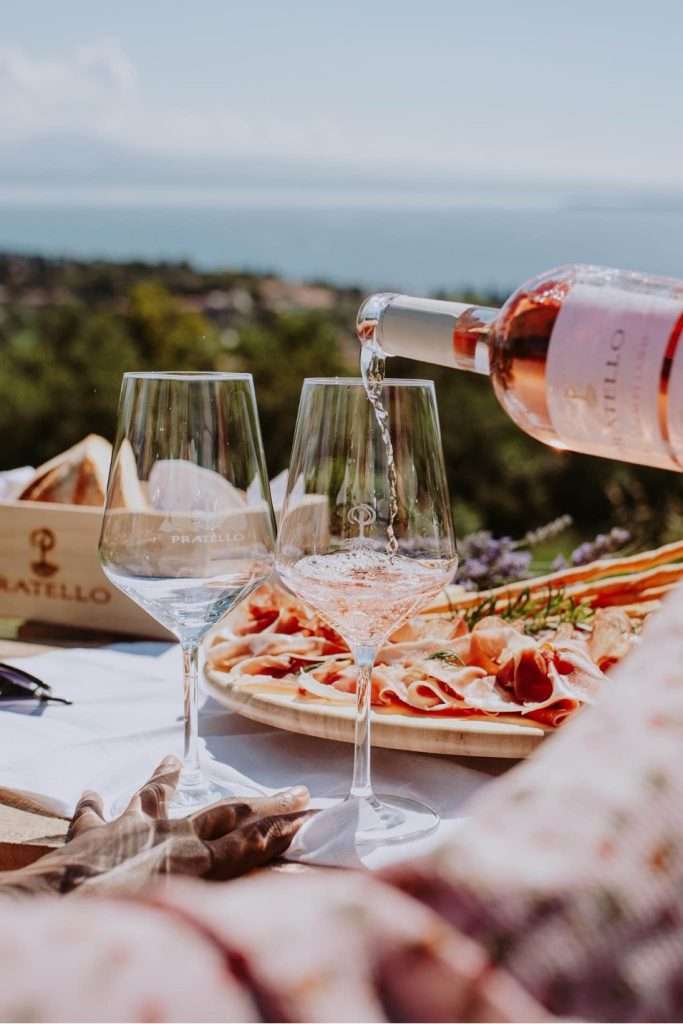
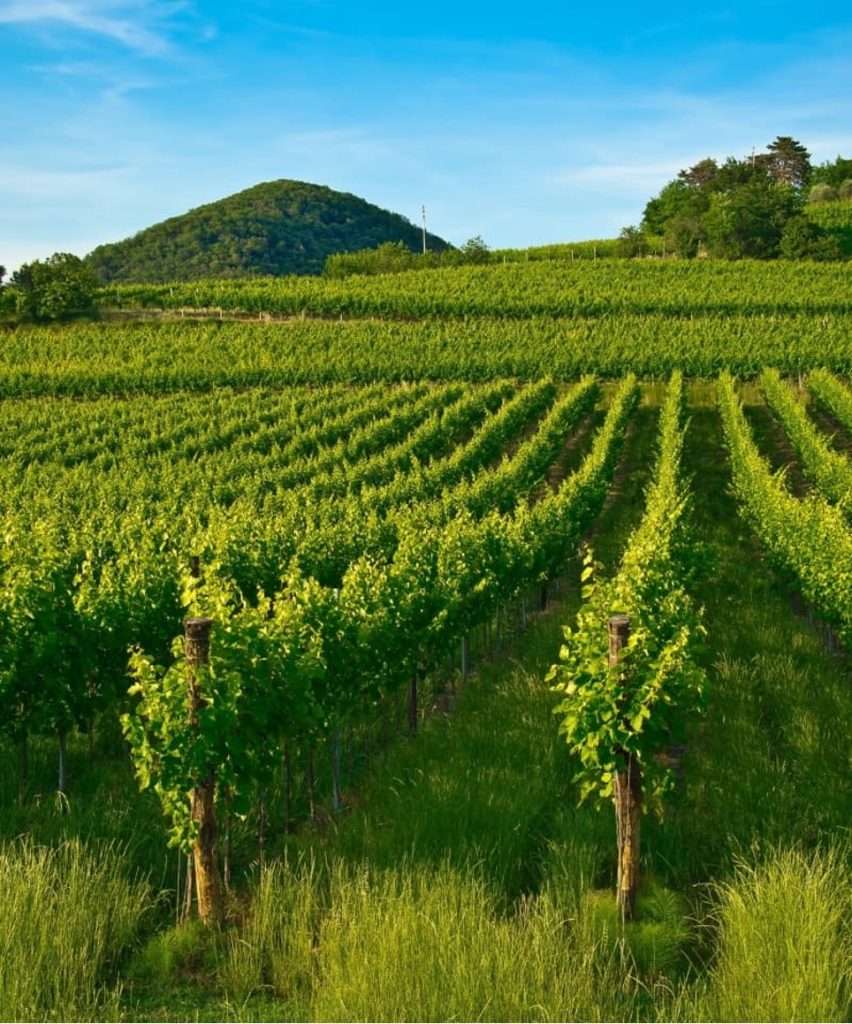
What to do in a day trip in Valtenesi
The cultural and natural heritage of Valtenesi offers many opportunities to live unique experiences in the area. Here are some ideas for many beautiful emotions!
To visit a unique and exciting location surrounded by vineyards and book a food and wine tasting we recommend the Conti Thun Winery.
To experience the waves of the lake as true protagonists on Wakesurf, E-foil, Foil, Jetsurf you cannot miss an adventure with the Your Wave team.
Have you ever experienced the silence of an electric boat? At Nautica Elettrica San Felice you will find it for hire.
Do you like to photograph? Contact professional photographer Stefano Maraggi to guide you in your search for the perfect shot.
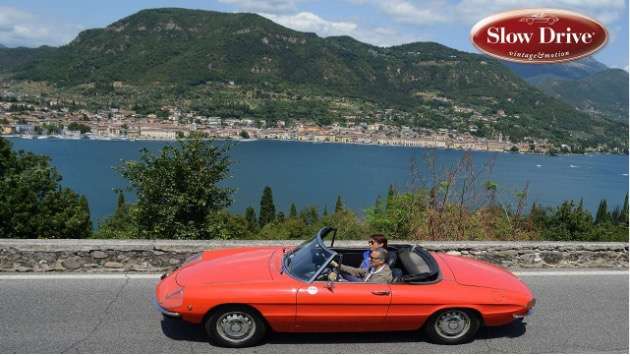
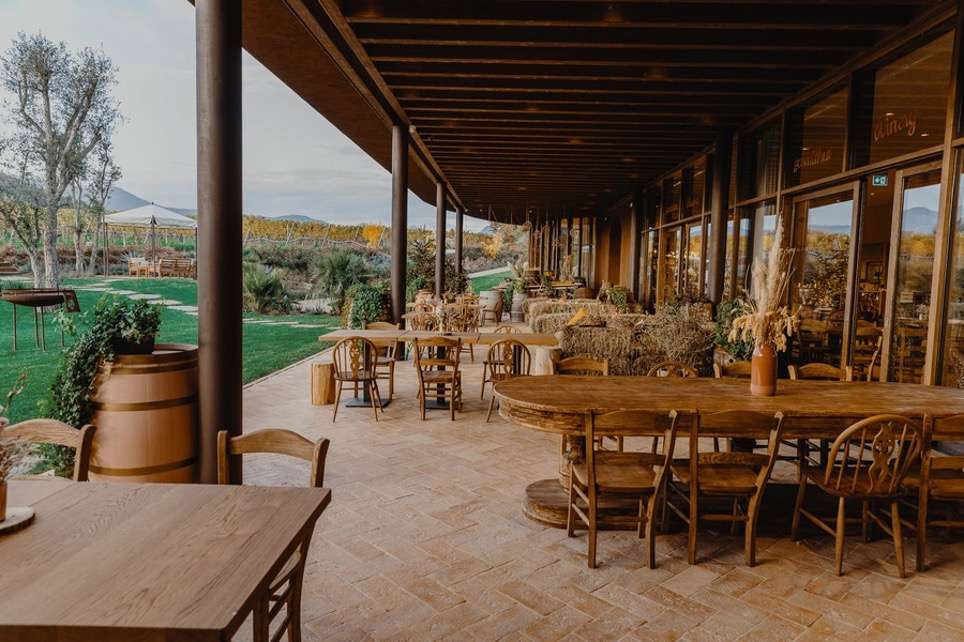
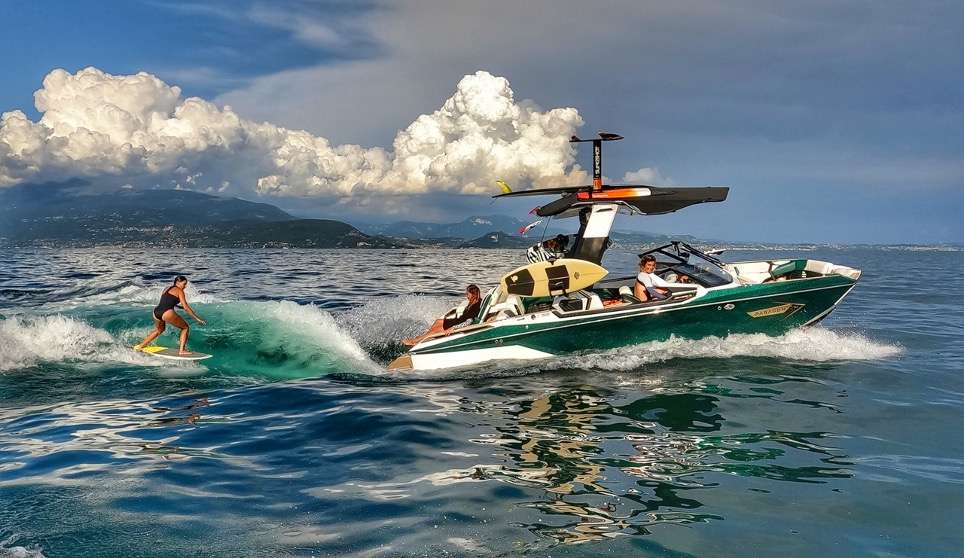
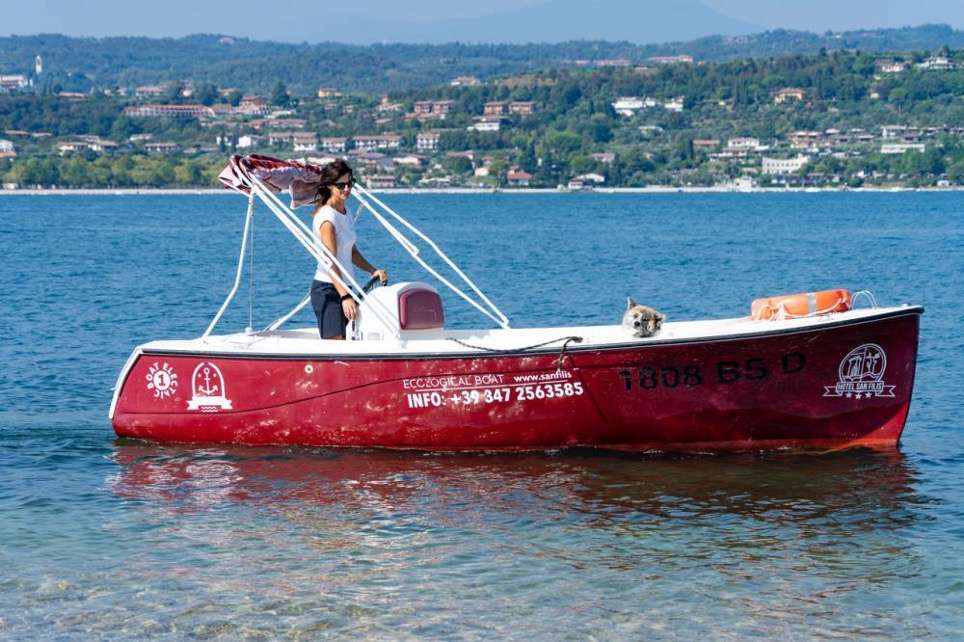
Valtenesi cycle path.
This cycle path winds its way over 24 kilometers immersed in nature and with wonderful views of the lake.
Along the way, fields with olive trees, vineyards, ancient farmhouses and mighty cypresses alternate. It passes through the municipalities of: Lonato, Sedena, Drugolo, Padenghe sul Garda, Soiano del Lago, Polpenazze, Puegnago, Villa and Salò.
Even if a good part of the route is on mixed roads, the traffic is reduced, therefore very relaxing even if paying attention to the possible vehicles – mostly agricultural – circulating in the area. The route is well marked with signs present in all the necessary points, however we advise you to consult the Garda MountainBike page by clicking here.
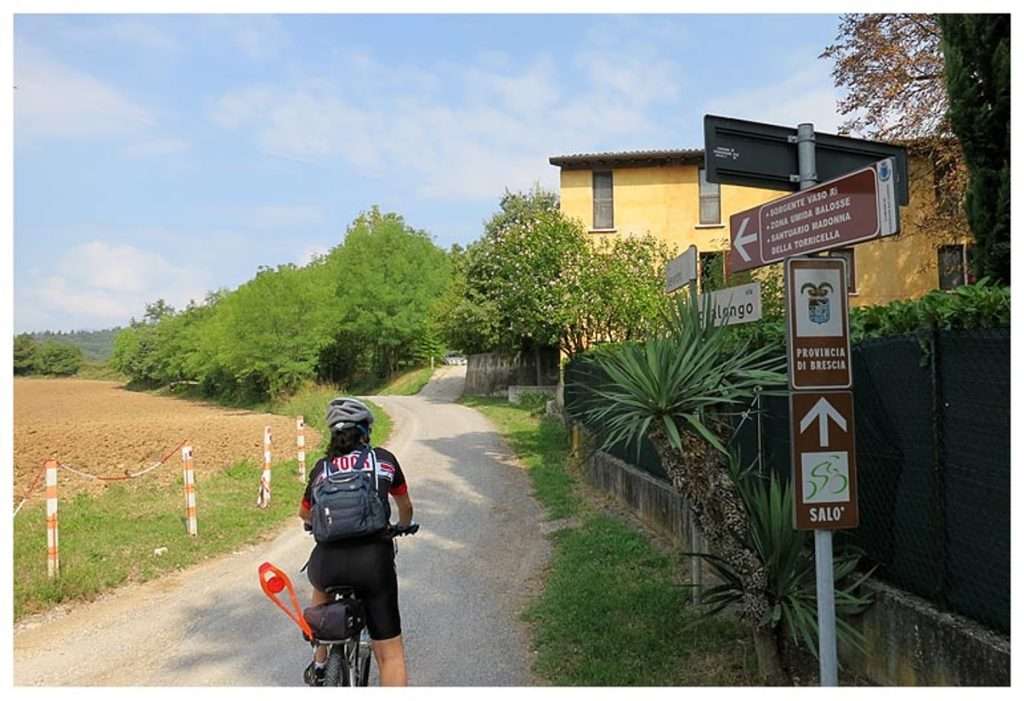
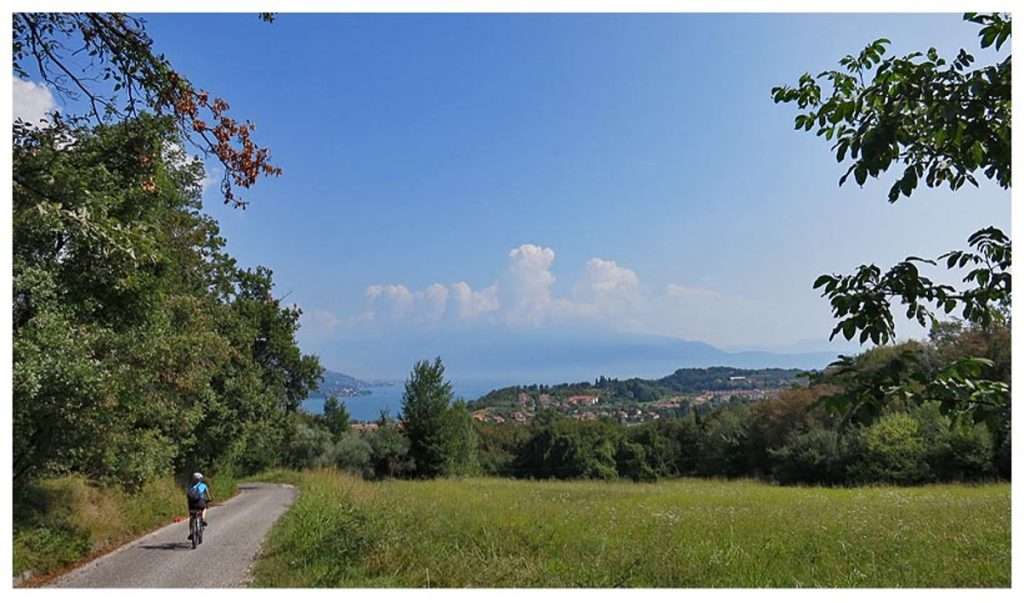
Sports enthusiasts who are passionate about golf can indulge in this sport at the famous and prestigious Garda Golf Country Club in Soiano del Lago: 27 holes which constitute one of the best proposals for golfers of all levels.
We also find Arzaga Golf in Cavalgese della Riviera and Colombaro Golf in Cunettone.
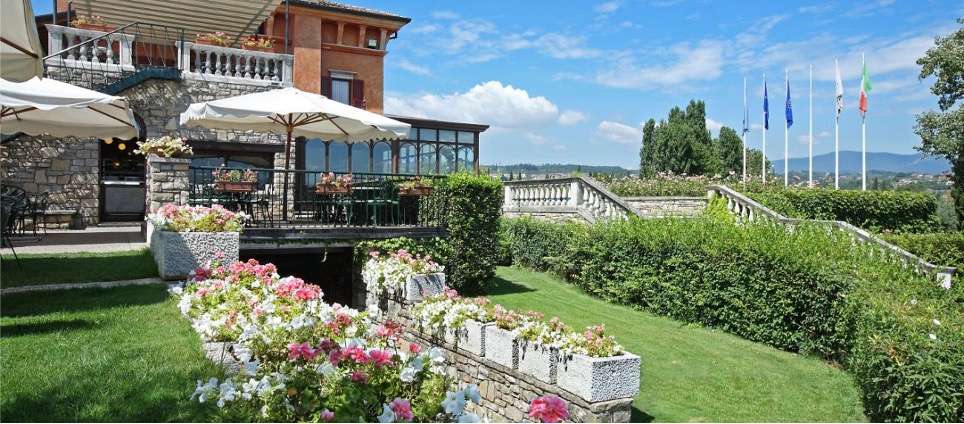
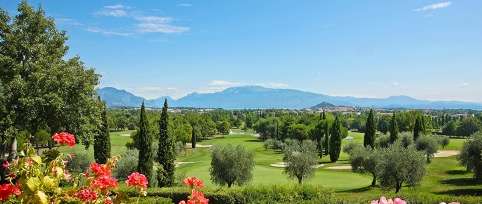
Valtenesi, a blessed land with a mild climate that Lake Garda offers; and as Virgil said: “O Benaco, who swell your waves and quiver like the sea”.
See you next time dear Outdoors!
Silvia Turazza – Garda Outdoors editorial staff
Where to sleep – Where to eat – Experiences on Lake Garda.
On Lake Garda there are many structures in which to stay, from small and well-kept B&B’s to resorts with wellness centers and beauty services, in the section dedicated to hotels find all the information you need to find the most suitable accommodation for you.
The same goes for restaurants, at this link you will find our selection of restaurants on Lake Garda. Remembering that Lake Garda offers several starred restaurants and the quality of the culinary offer is very high.
There are many activities and experiences you can do on Lake Garda, so we recommend you visit the section dedicated to experiences in our magazine by clicking here.
